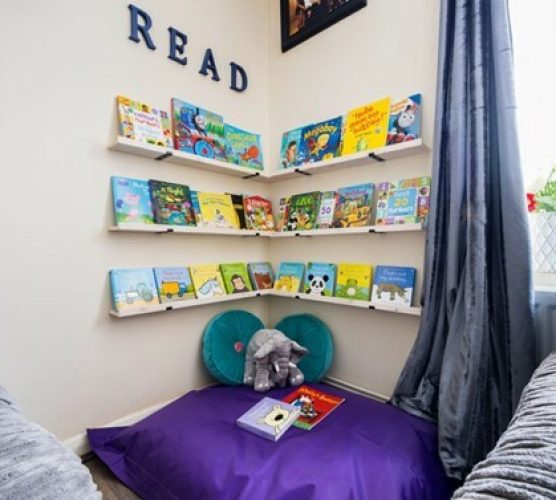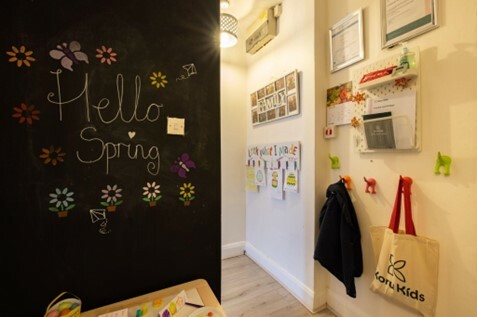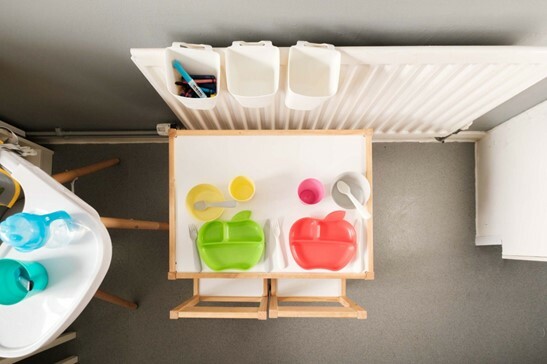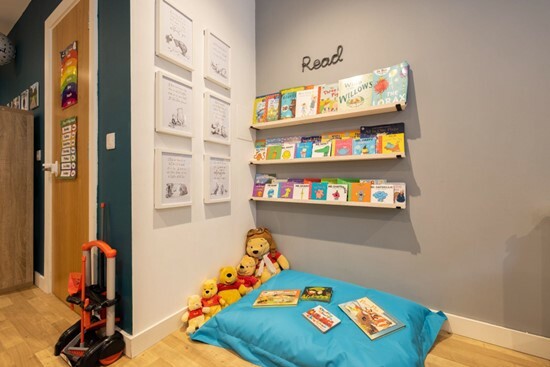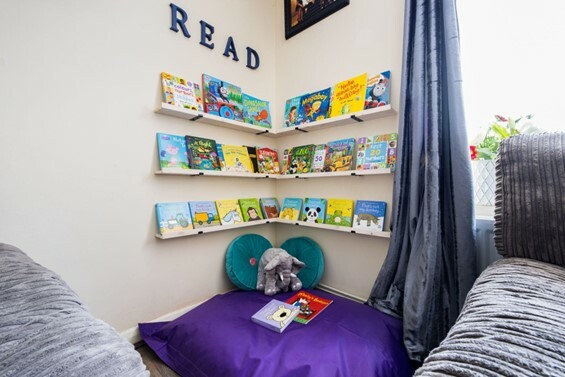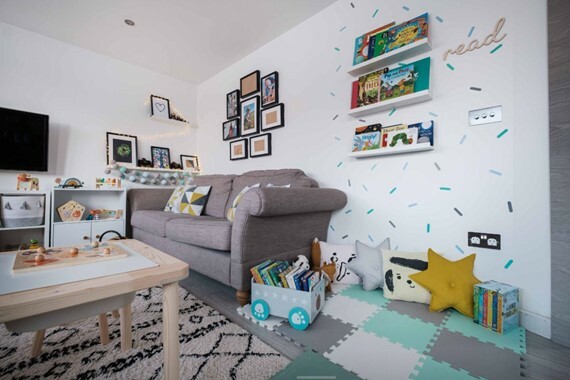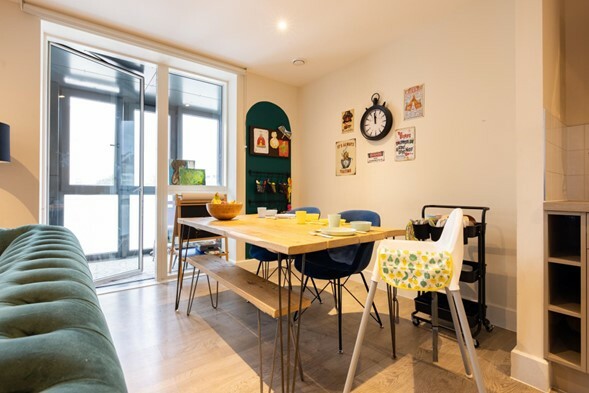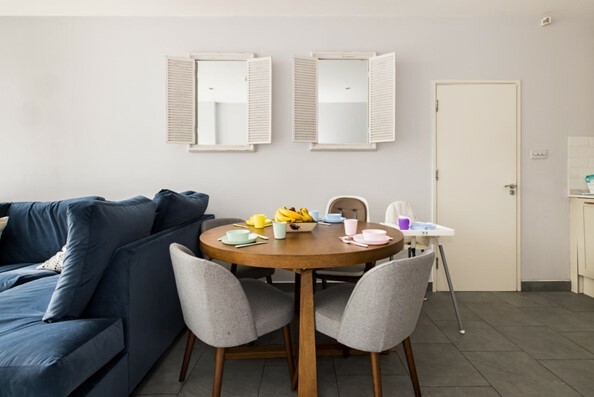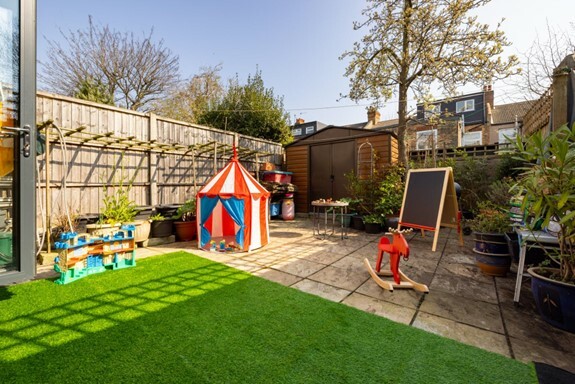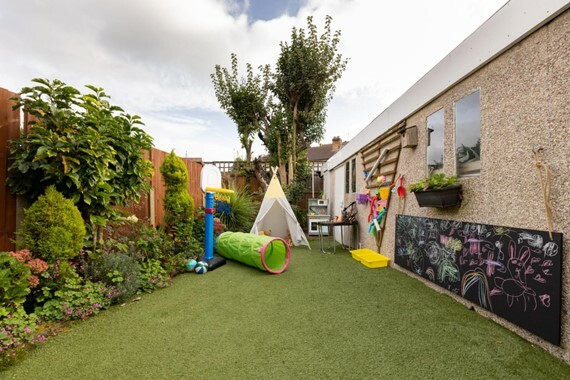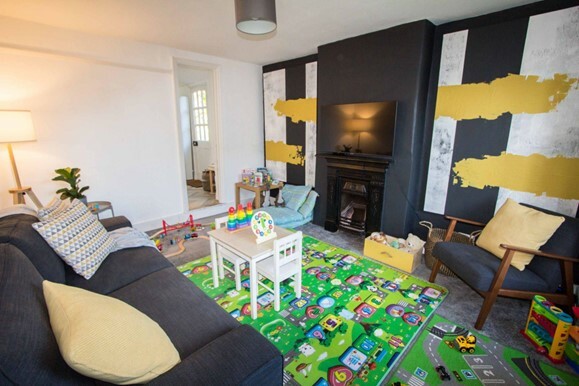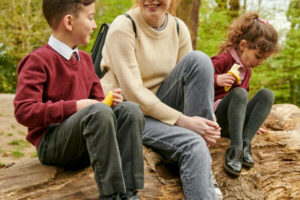Your childminding business is part of your home. But let’s face it, most of us don’t live in massive houses with rooms to spare. Instead, childminding playrooms need to work within your existing space. With a few clever hacks, you can create more floor space for the children to move around and enjoy activities.
So, whether you are starting from scratch, or renovating your childminding playroom, here’s how you can create space for play. From storage solutions to a careful choice of furniture, we have plenty of ideas to maximise what you’ve got.
Make the most of your walls
Walls, especially in entrance halls or stairways, have so much potential.
Lots of our childminders use these Ikea pegboards to make the most of their wall space. You can mix and match different attachments to create storage, hooks and shelves. It’s the perfect place to keep your register near the front door.
Think about displaying menus and certificates on your walls rather than cluttering up table space. Hooks for the children’s coats and bags will keep things tidy.
Rather than an easel or freestanding chalkboard taking up floor space with, use special paint to create a chalkboard wall. Hopefully the only walls the children will be drawing on in your setting!
Clever storage solutions
There are so many great storage solutions for small spaces that will help keep your playroom tidy. Think about hanging storage on the backs of doors or wheeled trays for under sofas. You can find baskets for pens and pencils that can hang on the wall or even off radiators.

Storage trolleys on wheels, here used for arts and craft materials, are a clever solution. It’s easy to bring to the right place when doing activities, and then roll away into a cupboard once you’re done, leaving more space to play.
Smart shelving

Tall, vertical shelving, as long as it is sturdy or secured to the wall, works well in childminder playrooms as they don’t require as much floor space.
This childminder has arranged theirs with the lower open shelves for toys and then storage drawers further up. Children have easy access to the activities on offer, encouraging independent play. Right on the top of the unit are some lovely houseplants. Adults can still enjoy them but they are out of reach from curious hands!
Floating bookshelves are really popular with Koru Kids childminders. They don’t take up space on the floor, but can still be hung low enough for children to reach for books themselves. Books are arranged flat, with their covers on display, rather than a traditional bookshelf. Not only will the bright illustrations add to your space, but they’ll encourage reading too.
Don’t waste any floor space
You probably have a bit of space in your home that isn’t used for anything. Perhaps it is in a corner of an awkwardly shaped room, or between the living room and kitchen areas of an open plan space. Why not turn that into your childminding reading corner?
It doesn’t matter if it is tucked between two sofas or nestled by a doorway. In fact the cosier the better! A beanbag or cushions and plenty of books are all you need to create a calm space for some downtime.
Just one table
A table can take up a lot of space in a childminder playroom. But you don’t need to have a separate one for your playroom space. Lots of childminders use their family dining room space as their main table.
Eating around a grown-up sized table is perfect for the family feel that childminding is all about. If children aren’t big enough for chairs yet, you can pull up high chairs to the table too. You can also use the table for arts and crafts and other activities – just remember a waterproof tablecloth!

If it doesn’t work using your existing table, it’s a good idea to go for a table set with stools that tuck underneath. That way it can easily be stored to the side when not in use.
Rotate your toys

Less is more when it comes to toys. You don’t need all the toys easily accessible to the children all the time. In fact, it is probably a good idea to put a limited number of toys out at once, and rotate the toys on offer every day or week.
This is efficient space-wise for your childminding playroom as you don’t need as much shelving or floor space. The extra toys can be stored in a cupboard, attic or shed until you swap them in.
And what’s even better is that toy rotation is inspired by Montessori and great for children. Having access to a smaller number of toys actually encourages children’s creativity and focus. Plus, there is less clutter to clear up at the end of the day. Winning all round!
Take it outside
You can create space inside by taking part of your childminding playroom outside. Toy kitchens become mud kitchens. Take tents, playmats and chalkboards outside too. And it doesn’t need to be a big garden. Small balconies and courtyards can still create that bit of extra space for play.
Fold away at the end of the day
When designing your childminding playroom, it’s always important to remember that it is still your home at the end of the day. When you’ve waved your final goodbyes to the children, you still want it to feel like yours. Investing in items that you can easily pack away will help you reclaim your space when you relax in the evenings.
Colourful playmats can be rolled away. Tents and climbing frames can be folded down. In minutes, it will look like a living room for the adults again!
